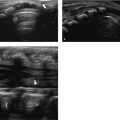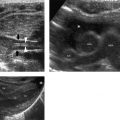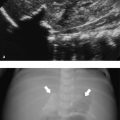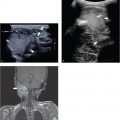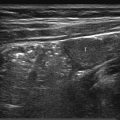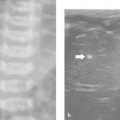1 Examining the Child and Creating a Child-Friendly Environment
A pediatric radiology department welcomes children between 0 and 18 years of age who are sick or wounded, accompanied by worried or anxious parents or caregivers. Their stay in the radiology department is usually of short duration, and the ultimate challenge is to collect the necessary diagnostic information while limiting the amount of pain and distress. Getting the child to cooperate will increase our chances of performing this task with success and doing it in a child-friendly way will improve the experience of the child and his/her parents or caregivers. Performing an ultrasound examination on a calm child in the presence of trusting parents or caregivers will also make life easier for the hospital staff. Moreover, it will increase our chances of building a trusting relationship and hence laying the foundations for good collaboration with the child during future examinations. Providing good preparatory information and creating a child-friendly environment in the broadest sense of the words is the basis for a successful examination.
1.1 Child-Friendly Staff
Creating a child-friendly environment starts with the attitude of the staff, including the receptionist, radiology assistants, technicians, and doctors. All staff should be aware of the particular needs of pediatric patients, showing consideration and providing explanation and reassurance. They should be patient, enjoy working with children, and be comfortable with and around them. Uncertainty can be transmitted to the child and the parents, and this may very well result in inadequate examinations. The staff must be aware of the importance of building a rapport with the child and the anxious parents in order to pave the way for a good-quality examination and possible future examinations. Not everybody is capable of doing, or willing to do this; therefore, it is important to select dedicated pediatric personnel, even in a general radiology department setting. Without a committed pediatric team, child-friendly decoration and logistics are an investment of little value.
1.2 Appointment
When an appointment for an ultrasound examination is scheduled, several factors should be taken into account to find the most favorable time slot. If a child is to have several tests or examinations on the same day, it is best to schedule an ultrasound scan before any invasive examination that might be upsetting because a distressed child will be much less likely to cooperate. Also, crying will increase the amount of air in the stomach and bowel, rendering an abdominal ultrasound examination more difficult, if not inconclusive. If a child needs to be fasting for an examination of the upper abdomen, the session should be planned for as early as possible in the morning. Fasting infants should be scheduled right before the next feed.
1.3 Appointment Letter
It is often underestimated how a “benign” procedure such as an ultrasound can be perceived as a stressful event by children and their parents. It may be the child’s first visit to the radiology department, and the environment and the procedure may be unknown, which can be very intimidating. In addition, the parents and/or the child may be anxious about the findings of the examination. At best, the referring clinician will have explained what the ultrasound scan is about, including both the procedure and the possible outcome. However, supplementing this explanation with a clear information leaflet, provided with the appointment letter, which reiterates the ins and outs of the ultrasound scan, is a good practice. In our institution, we have added a section with tips from the child therapist team on how parents or caregivers can explain the procedure to a child in accordance with the age of the child. Including a contact telephone number in case there are still questions or concerns about the procedure is certainly useful.
The appointment letter should state the date and time of the appointment and the scan, where the patient is due, the type of scan, and which preparation is necessary (e.g., should the child have an empty stomach or a full bladder?).
1.4 Waiting Area
Examinations on children can be unpredictable and can take up more time than planned. However, keeping the waiting time for all children as short as possible should be a priority. Bored or fractious children are more difficult to examine. Annoyed parents can escalate their children’s anxiety and may direct their frustration at you, again rendering the ultrasound examination more challenging. This should be taken into account when the time slots for ultrasound scans are created. If a delay arises unexpectedly, take time to inform the parents and give them a reasonable and understandable explanation.
The waiting area should be a safe, friendly, and distracting area where children of any age and their parents can wait a short while before the examination is due ( Fig. 1.1 ). In our institution, we have intentionally opted for a closed area so that parents can focus on the administrative dealings while the child can play in a safe environment where he or she is unable to run off out of sight.
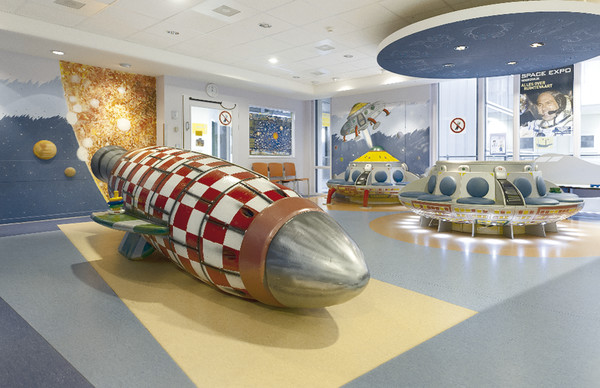
The administration desk has a lower part allowing children to see the person behind it, helping them to feel in control and included ( Fig. 1.2 ).
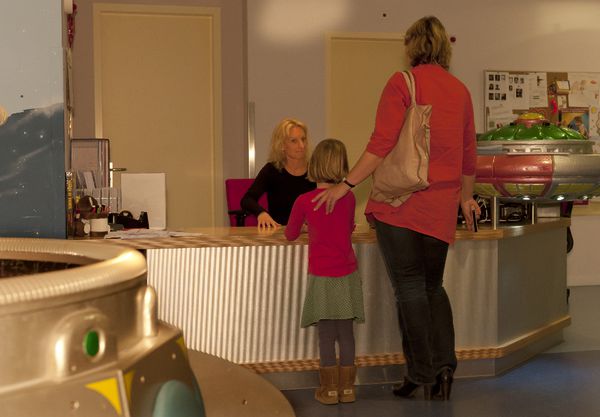
There is a television showing short cartoons ( Fig. 1.3 ), as well as books and magazines, a table with paper and crayons ( Fig. 1.4 ), and lots of washable toys. Other types of distracting items can be offered. At the Royal Belfast Hospital for Sick Children, a collage has been made with medical supplies ( Fig. 1.5 ). This has proved to be very popular with the children, who try to spot things the nurses and doctors have been using.
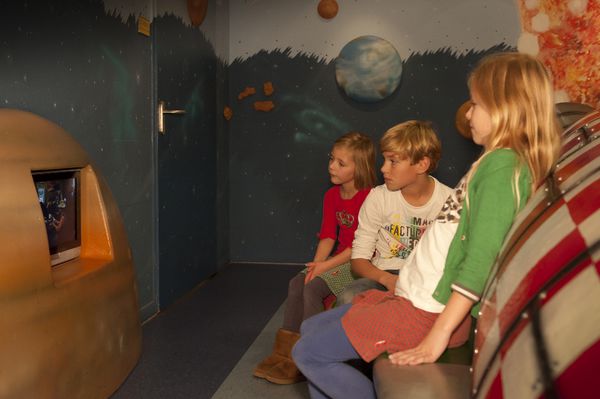
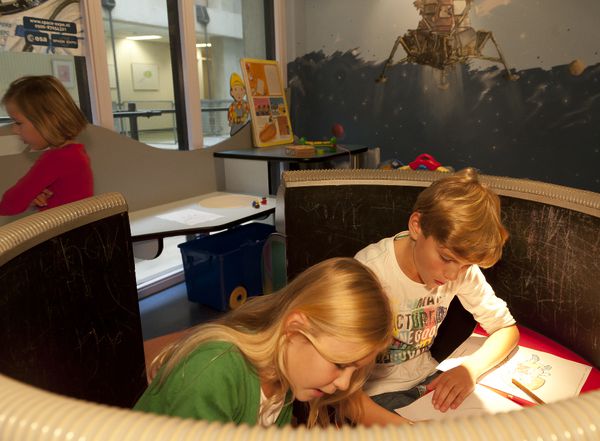
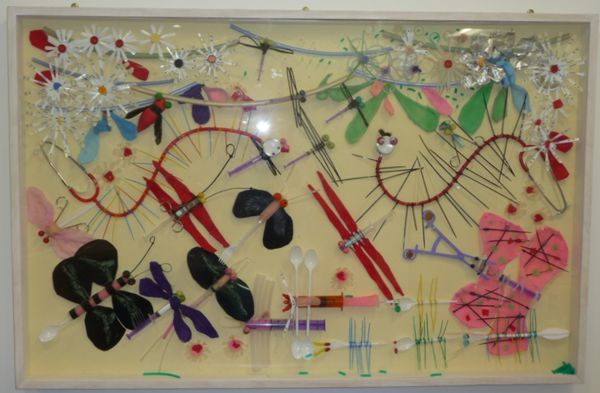
It is also worth having a quiet corner for very ill or injured children and bedridden patients who are not interested in this kind of distraction.
Stay updated, free articles. Join our Telegram channel

Full access? Get Clinical Tree


